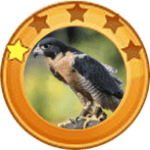- Home
- Shop
- Forest Series
- Grassland Series
- Desert Series
- Contact
- Home
- Shop
- Forest Series
- Grassland Series
- Desert Series
- Contact

Falcon Series





REMOTE PARENTAL MODE
A remote controller is equipped to allow parents to take over the control if the baby is too young to drive this aeroplane alone. Moreover, the airfoils with button lock hinges could be folded to saving storing space while the screw propeller will rotate powered by wind. The battery indication reminds you of when to recharge.
SAFE & COMFORTABLE
The 3-point adjustable safety belt perfectly fixes your baby firmly on the seat. The driving wheels are made of foam rubber, soft and highly-resilient to effectively absorb the shock and ensure an excellent grip on flat or rugged roads. Both wings are configured with an auxiliary trolley wheel which offers a significant support against excessive tipping at turning.
DISTINCTIVE GIFT FOR KID
Specially scaled down in accordance to American aircraft in Battle of Midway, this children’s electric toy car could ‘flying’ at full directions. Operated with 2 aviation control levers in the cockpit, it simulates realistic aircraft-driving. With large capacity batteries, long-time playing is assured, perfectly regarded as a present for your grandson/granddaughter on Festivals like Christmas and Children’s Day.
RICH SOUND EFFECTS
A volume-adjustable audio system adds engine sound and music to this unique baby carriage, containing functions of MP3 (with USB interface) and an FM radio that will search for valid frequency automatically. The button on the left control lever is for machine gun, and the right one aerial bomb.


CHARACTERISTICS
The Chipmunk is a member of the family Mammalia, Rodentia and Sciuridae. It is also known as the Striped Squirrel, the Timber Tiger and the Mini-bear. The body length among most Chipmunks ranges from 5.5 to 6.3 inches and the tail length is 5 Inches. Chipmunks typically weigh about 0.02 pounds and live about 5 to 10 years. They have small but prominent ears which face forwards, and small eyes on the sides of their heads. Most wild Chipmunks are lively.


Lorem ipsum dolor sit amet, consectetur adipiscing elit. Ut elit tellus, luctus nec ullamcorper mattis, pulvinar dapibus leo.


CHARACTERISTICS
The Peregrine Falcon is the fastest bird in the world and the fastest member of the animal kingdom. It is a large, crow-sized falcon; it has a blue-grey back, barred white underparts, and a black head. The Peregrine Falcon is a well-respected falconry bird due to its strong hunting ability, high trainability, versatility, and availability via captive breeding. It is effective on most game bird species, from small to large.

RANGE AND HABITAT
Peregrine Falcons can be found nearly everywhere on Earth, except in extreme polar regions, very high mountains, and most tropical rainforests; the only major ice-free landmass from which it is entirely absent is New Zealand. These birds live mostly along mountain ranges, cliffs, river valleys, coastlines, and increasingly in cities. They prefer open habitats, from tundra to desert mountains, including grasslands, savannah, meadows, and shrubland. In mild-winter regions, they are usually permanent residents, and some individuals, especially adult males, will remain in the breeding territory. Only populations that breed in Arctic climates typically migrate great distances during the northern winter.

DIET
Peregrine Falcons are carnivores and feed almost exclusively on medium-sized birds such as pigeons and doves, waterfowl, songbirds, and waders. On occasion, they will also take bats, rats, voles, hares, shrews, mice, squirrels, insects and reptiles.

BEHAVIOR
Habits and Lifestyle
Peregrine Falcons are not very social birds; outside of the breeding season, they are often seen singly or in pairs. These birds are active during the day but hunt most often at dawn and dusk when prey are most active. Peregrines require open space for hunting and searching for prey either from a high perch or from the air. Once prey is spotted, these hunters begin their stoop, folding back the tail and wings, with feet tucked. Prey is typically struck and captured in mid-air; Peregrine Falcons strike their prey with a clenched foot, stunning or killing it with the impact, then turn to catch it in mid-air. If their prey is too heavy to carry, peregrines will drop it to the ground and eat it there. If they miss the initial strike, they will chase their prey in a twisting flight. Peregrines may also surprise and ambush prey on the ground, and in rare cases even pursue the prey on foot. Breeding pairs may hunt together and the female often catches larger prey. Peregrine Falcons are generally silent birds, but when near the nest, they usually produce a rasping “kack-kack-kack-kack” call.
Mating Habits
Peregrine Falcons are monogamous breeders. A pair mates for life and returns to the same nesting spot annually. During the breeding season, these birds are territorial and nesting pairs are usually more than 1 km (0.62 mi) apart. Pairs perform courtship flight that includes a mix of aerial acrobatics, precise spirals, and steep dives. The male passes prey it has caught to the female in mid-air. Peregrine Falcons nest in a scrape, normally on cliff edges. The female chooses a nest site, where she scrapes a shallow hollow in the loose soil, sand, gravel, or dead vegetation in which to lay eggs. No nest materials are added. Cliff nests are generally located under an overhang, on ledges with vegetation. Egg-laying usually occurs from February to March in the Northern Hemisphere, and from July to August in the Southern Hemisphere; the Australian subspecies may breed as late as November, and equatorial populations may nest anytime between June and December. The female lays 3 to 5 white to buff eggs with red or brown markings. They are incubated for 29 to 33 days, mainly by females; the male also helps with the incubation of the eggs during the day. After hatching, the chicks are covered with creamy-white down and have disproportionately large feet. They fledge 42 to 46 days after hatching and remain dependent on their parents for up to 2 months. Peregrine Falcons usually reach reproductive maturity at 1 to 3 years of age, but in larger populations, they breed after 2 to 3 years of age.

The Chipmunk is a member of the family Mammalia, Rodentia and Sciuridae. It is also known as the Striped Squirrel, the Timber Tiger and the Mini-bear. The body length among most Chipmunks ranges from 5.5 to 6.3 inches and the tail length is 5 inches. Chipmunks typically weigh about 0.02 pounds and live about 5 to 10 years. They have small but prominent ears which face forwards, small eyes on the sides of their heads. Most wild Chipmunks are lively.
The Red Squirrel, a member of the Sciuridae, is an arboreal, omnivorous rodent often referred to as a Forest Seeder and folklore as the Devil King Squirrel.
The Arizona Gray Squirrel, also known as the American Gray Squirrel, is a member of the family Rodentia and Sciuridae. It is small in size, with gray fur and a belly between white and cream. It has long ears, no tufts of fur and a fluffy tail edged in white. The body is about 16-20 inches long and weighs up to 1.4 pounds.
The Rock Squirrel, also known as Sao Maozi or Stone Mouse, belongs to the rodent and is a species in the family Sciuridae. The most common natural predators of the Rock Squirrel include bobcats, owls, eagles and snakes. Though the Rock Squirrel is cute, alert, and courageous, it is still considered a pest due to its habit of destroying crops.
The Abert’s Squirrel is a member of the genus Sciurus with a body length of 18-22.8 inches, a tail length of 7.5-9.8 inches and a weight of 2.2 pounds, and can live up to 10 years in the wild. Its most distinctive feature is tassels of fur about 0.8-1.2 inches long at the tip of its ears, which looks very interesting. In addition, it is alert and agile.

Peregrine Falcon able to Thrive in Many Metropolitan Areas
New Mexico is home to a variety of falcons but none as impressive as the peregrine falcon.
The peregrine is 16 inches long, with a wingspan of 41 inches. It has a gray back, dark head, and spotted or barred underwings and breast.
All falcons have what are called “sideburns” or sometimes referred to as “mustache.” This is a pale or very dark line that starts at the bottom of the eyes and stops at the base of the cheek or throat.
The word “peregrine” means wanderer. The peregrine falcon is found worldwide and on every continent except Antarctica.
This falcon can be found along coastlines, rivers and lakes, as well as in major cities and mountain ranges up to 12,000 feet in elevation.
Last summer I was fortunate enough to have a peregrine in my Nob Hill neighborhood in Albuquerque. I heard an unfamiliar bird call and noticed the falcon perched high in a neighbor’s elm tree. Every day I watched it fly away and return later with prey.
The peregrine falcon’s diet consists mainly of birds. Up to 450 bird species have been documented as prey for the peregrine in North America. This falcon will eat birds as large as sandhill cranes and as tiny as hummingbirds. Their food of choice is rock dove, more commonly known as pigeon.
Peregrine falcons are able to thrive in many metropolitan areas due to the availability of pigeons as an abundant food source.
Peregrines nest 25 feet to more than 1,300 feet high. Nest sites include cliff ledges, farm silos, electric towers and in cities, skyscrapers. The male selects several sites and the female chooses which site is most suitable.
People called “falconers” have trained falcons for hunting for thousands of years. The peregrine falcon is considered the elite falcon among falconers. It is an especially strong flier. It is believed to be the fastest bird in the world with cruising speeds from 25-35 mph and up to 67 mph when chasing prey.
Peregrines do what is called “stooping.” This is when the peregrine drop down on prey from 300-to-3,000-feet high in the sky above with wings closed. Speeds when “stooping” can reach up to an impressive 200 mph.
Declining peregrine populations from the 1950s into the 1970s due to pesticide use put them on the endangered species list. Pesticide bans and efforts by conservationists and falconers helped to increase the peregrine’s population and in 1999 the peregrine falcon was removed from the endangered list.



Follow Us: